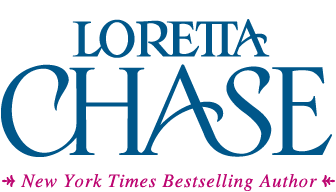You’ll notice that the commentary mentions “amusement,” a function I had no trouble imagining. The more bizarre suggestions I leave you to contemplate, noting only that in 1811, when Merlin’s Mechanical Chair appeared in Ackermann’s Repository, England was at war with France, and Napoleon was a major threat.
My story, however, is set in 1833, long after Napoleon was defeated at Waterloo. In A Duke in Shining Armor, Merlin’s Mechanical Chair plays its kinder role of providing both locomotion and entertainment.
MERLIN’S MECHANICAL CHAIR.
This curious machine, of which a correct perspective view is given in the annexed engraving, is the contrivance of the late ingenious and well-known Merlin. It is expressly calculated for the accommodation of invalids who, from age or infirmity, are unable to walk about, or of persons, under the temporary inconvenience of gout or lameness.
In the library, or on the lawn, or gravel-walk or the pleasure-ground, chairs of this kind are peculiarly useful and pleasant. They are in construction an easy reclining or arm-chair, with a foot-board, and, at the extremity of each arm, a small winch handle, easily turned by the hands of the person seated, and which, by their connection with an arrangement of wheels below, propel the chair in any required direction, or with any required velocity, at the pleasure of the operator. These operating handles are seen in the drawing at A and B. C C are two wheels on which the chair runs, having each on its flat and outer surface a brass face wheel, worked by a smaller one (marked D) fitted on the long axis of the winch handle.
E is a third wheel or castor, fitted to the back rail of the chair, and which forms a third point of support, and obeys the direction taken by the wheels C C.
The mode of operation is this: The party being seated, the small brass rod seen in the drawing, passing through the right-hand arm of the chair, is pulled upwards a little way to disengage the wheels, and the winch handle set to point forward as in the position represented in the drawing.
Now, if the two handles be both turned outwards the chair moves directly forward. If turned inwards it moves directly backwards. If the right-hand winch be turned outwards, the left remaining at rest, the chair turns sharply to the left, moving on its left wheel as a center; and vice versa of the left-hand winch if turned the same way, or of the right-hand one if turned inwards or the contrary way. If the two handles be turned the same way, i. e. both to the right-hand, or both to the left, at the same time, the chair will move sharply round to the right or left, having its center, or the operator himself, as its center.
The curious evolutions which may thus easily be performed in this chair render it the means of very considerable amusement, as well as of important use, to those who require its agency; but to the mechanical observer it possesses a new interest. It would not be difficult to contrive an arrangement for moving these wheels, or winch handles, by the action of a very small and portable steam-engine, and increasing the dimensions of the whole machine, and adapting to it a suitable upper structure, to render it a most curious mode of quick conveyance, without the agency of animal labour: indeed, it seems to require no great stretch of the imagination to form of the contrivance many other highly interesting machines.
A suitable construction might be hit upon to enable it to carry a small cannon, which should be, both for itself and its operators, completely unassailable by the enemy, as well as, by the singular rapidity of its evolutions, terribly and unusually destructive.
In judicious hands, the principle of the machine might possibly be advantageously used in the construction of a self-moving engine for the public conveyance of dispatches, which would have for its leading peculiarities, a rapid and certain rate of travelling, and complete inviolability as to the matters entrusted to its charge.
Of the interest and value of the contrivance in its present shape, those only can judge correctly who have experienced its singular advantages.
This drawing is furnished us by Messrs. Morgan and Sanders, of Catherine-street, Strand, whose warehouses are the grand emporium for furniture combining all the essentials of elegance and comfort. —Ackermann's Repository October 1811
You can learn more about Merlin himself from Mike Rendell’s blog post as as well as mine at Two Nerdy History Girls. You can see another photo at the Kenwood House website here (please scroll down for the image).







